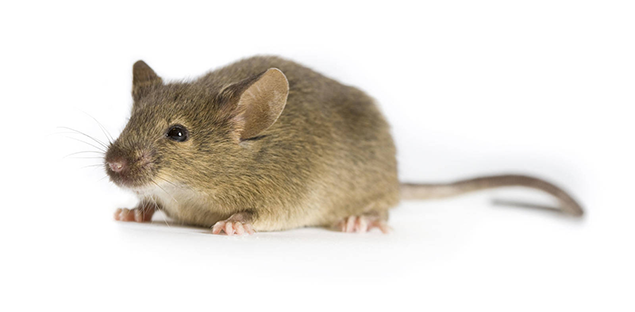C3H/HeJ
C3H/HeJ mice are used as a general-purpose strain in a wide variety of research areas including cancer, immunology and inflammation, infectious disease, sensorineural, and cardiovascular biology.
They are homozygous for the retinal degeneration 1 mutation (Pde6brd1), causing blindness by weaning age.
White belly spots, ranging in phenotype from a few white hairs to a defined spot are common in C3H/HeJ mice.
There is also a high incidence of hepatomas in C3H mice (reportedly 72-91% in males at 14 months, 59% in virgin females, 30-38% in breeding females).
Despite the lack of exogenous mouse mammary tumour virus (MMTV), virgin and breeding females may still develop some mammary tumours later in life.
C3H/HeJ mice, fed an atherogenic diet (1.25% cholesterol, 0.5% cholic acid and 15% fat), fail to develop atherosclerotic aortic lesions in contrast to several highly susceptible strains of mice like C57BL/6J.
C3H/HeJ mice spontaneously develop alopecia areata (AA) at a reported incidence of approximately 0.25% by 5 months of age. In older mice (12-18 months old), incidences as high as approximately 20% are reported. Females as young as 3-5 months can develop AA, but onset typically is delayed until after 6 months in males. Alopecia areata can be surgically-induced by grafting a small piece of skin from an older, donor animal with AA onto a younger, isogenic C3H/HeJ recipient.
A spontaneous mutation in Tlr4 occurred in C3H/HeJ at the lipopolysaccharide response locus (mutation in toll-like receptor 4 gene, Tlr4Lps-d) making C3H/HeJ mice more resistant to endotoxin.
C3H/HeJ mice are highly susceptible to infection by Gram-negative bacteria such as Salmonella enterica. Mice infected with Salmonella exhibit delayed chemokine production, impaired nitric oxide generation and attenuated cellular immune responses. Mortality in infected mice appears to result from enhanced bacterial growth within the liver Kupffer cell network.
The C3H/HeJ substrain is homozygous for an inversion on Chromosome 6 (symbol: In(6)1J), but results in no reported phenotype.
The spontaneous mutation, spike wave discharge 1 (Gria4spkw1), is present in C3H/HeJ. Mice homozygous for this mutation exhibit a modest incidence of absence of seizures.
This strain is also homozygous for a hypomorphic allele in Pcnx2, which is caused by an IAP insertion and which dampens the severity of the absence seizure phenotype caused by Gria4spkw1.

| Age (Weeks) | Body Weight (grams; mean ± st. dev.) | |
| Males | Females | |
| 3 | 11.3 ± 2.1 | 9.4 ± 1.5 |
| 4 | 17.2 ± 2.4 | 12.2 ± 1.7 |
| 5 | 20.0 ± 2.0 | 15.3 ± 1.4 |
| 6 | 21.5 ± 1.5 | 16.8 ± 1.2 |
| 7 | 23.9 ± 1.5 | 17.5 ± 1.4 |
| 8 | 24.6 ± 1.6 | 17.9 ± 1.3 |
| 9 | 25.7 ± 1.7 | 19.7 ± 1.1 |
| 10 | 26.5 ± 1.7 | 20.1 ± 1.3 |
| 11 | 27.4 ± 1.8 | 20.5 ± 1.3 |
| 12 | 27.9 ± 1.9 | 21.3 ± 1.6 |
For more detailed information please visit https://www.jax.org/strain/000659
